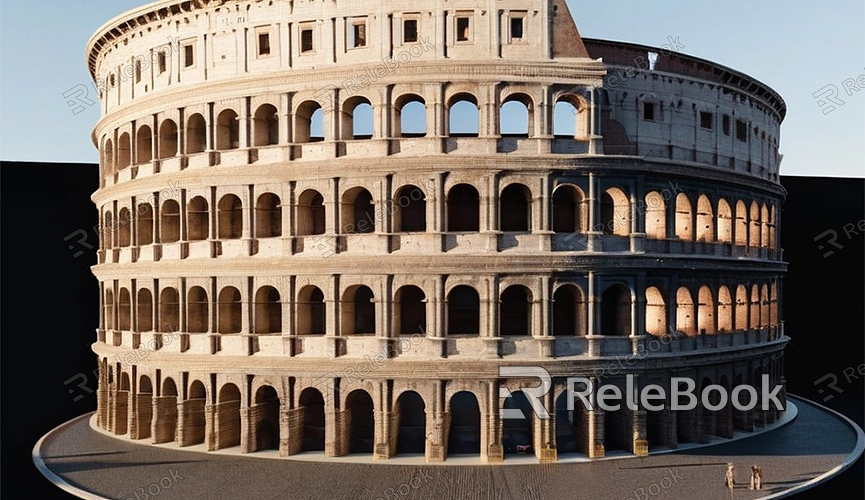How to Make a 3D Colosseum Model
Creating a 3D model of the Colosseum not only enhances your 3D modeling skills but also provides a deeper understanding of historical architecture. This guide will walk you through the process of creating a realistic 3D Colosseum model from scratch using Blender. We will cover each step in detail to ensure you can follow along and complete your model with ease.
Preparation
Before you start modeling, make sure you have Blender installed. If you’re a beginner, it’s helpful to familiarize yourself with Blender’s interface and basic operations through online tutorials. This will make the modeling process smoother.

Collect Reference Materials
Before diving into modeling, gather some reference images and information about the Colosseum. These materials will help you understand the structure and details of the Colosseum, making your model more accurate and realistic.
Creating the Basic Structure
1. Create the Base
- Create the Circular Base: Open Blender and delete the default cube. Press `Shift + A`, select “Mesh,” and then choose “Circle” to create a circular base. Adjust the radius to match the size of the Colosseum.
- Create the Outer Walls: Select the base, press `Shift + D` to duplicate, and then press `S` to scale it slightly larger. Next, press `E` to extrude and pull it upwards to form the height of the outer walls. Use the same method to create the inner walls, ensuring there is a suitable thickness between the inner and outer walls.
- Create the Seating Layers: On the inner walls of the Colosseum, create multiple horizontal rings to represent the seating tiers. You can achieve this by duplicating the inner wall and adjusting its height and scale.
Adding Details
1. Create Arches
- Add Arches: On the outer walls, add several arches. You can use the “Archimesh” plugin for quick arch generation or create them manually. Distribute the arches evenly around the outer walls.
2. Add Stairs and Passageways
- Include Stairs and Passageways: Between the seating layers, add stairs and passageways. Use Blender’s “Extrude” tool and “Boolean” operations to easily create these details.
3. Create the Central Arena
- Create the Arena: In the center of the Colosseum, create an elliptical arena. Use the “Circle” tool for the basic shape, then extrude and scale it to match the actual dimensions of the arena.
Applying Materials and Textures

1. Add Materials
- Apply Materials: Add appropriate materials to different parts of the model. For example, use stone materials for the outer walls and seating layers, and sand materials for the arena.
2. Apply Textures
- Use Textures: Download high-quality textures from the internet and apply them to your model. If you need a lot of high-quality 3D textures, HDRIs, or 3D models for creating scenes, Relebook is a great resource. After downloading, you can import these textures and models into Blender to enhance your model's realism.
Rendering and Displaying
1. Set Up Lighting
- Configure Lighting: Set up an appropriate light source in Blender to simulate sunlight. Use a “Sun” light source and adjust its angle and intensity to make your model look more realistic.
2. Set Up the Camera
- Adjust the Camera: Position and angle a camera in Blender to capture the best view of your model.
3. Render the Image
- Render Settings: Choose suitable render settings and perform the rendering. Once completed, you’ll have a realistic image of your 3D Colosseum model.
Creating a 3D model of the Colosseum not only improves your 3D modeling skills but also offers a deeper insight into historical architecture. By using Blender, you can create a realistic Colosseum model and apply it in educational, research, and various other fields. If you need high-quality 3D textures, HDRIs, or model downloads for your projects, Relebook is an excellent resource. Downloading textures and models from Relebook and importing them into Blender can greatly enhance the quality of your work.

